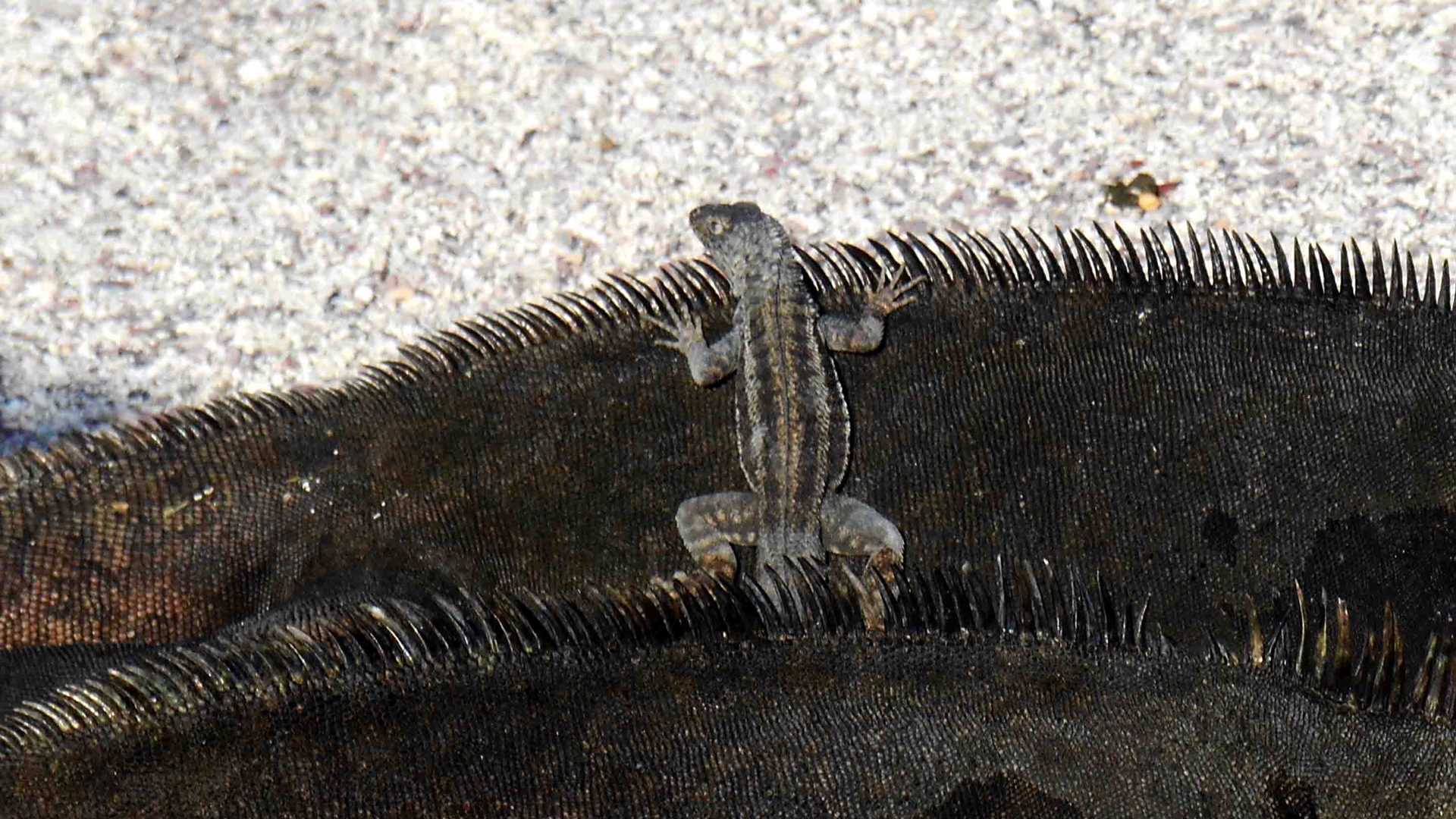One of the great privileges of travelling with the National Geographic Islander is that we visit places where nature remains untouched, such as Fernandina Island. We started our day by crossing the equator and celebrated with a symbolic ceremony up on the bridge. After celebrating this exciting occasion, our first destination was Punta Vicente Roca. Here we were surrounded by a magnificent landscape which reflected the intimate interconnection between ecology and geology. We discovered how ancient geologic processes molded the landscape that attracts thousands of visitors to the Galapagos every year. Particularly interesting features included large dikes. These dikes were formed by the intrusion of liquid magma that ascended through conduits in previous existing basalt and then solidified when they didn’t reach the surface, forming continuous body of rocks. Within such a unique geological theater, we spotted various groups of large marine iguanas which appeared as old witnesses of the powerful dynamics of volcanism on this island. We also found a feeding flock of birds including blue footed boobies and Nazca boobies, brown noddies, brown pelicans and storm petrels. Seabird feeding flocks are temporary associations in which individuals congregate to feed. Although we did not observe a large amount of individuals, we were able to distinguish a wide diversity of species in the same area. Later on, the snorkeling outing was an amazing opportunity to swim with the Galapagos penguins. Pacific sea turtles also joined us in this amazing underwater experience. We then came back to enjoy a tasty variety of options for lunch.
In the afternoon we moved to Fernandina Island, the most isolated and pristine wildlife sanctuary of the archipelago. The only authorized visiting site on this magical island is Punta Espinoza. Here we encountered a colony of sea lions with many nursing pups. The relaxed appearance of the sea lions at this site did not diminish their fascinating presence. One of these sea lions was resting quietly while we discovered a Galapagos banded snake which was hunting a yellow warbler, though unsuccessfully. The walk around this spectacular paradise also gave as the opportunity to observe the curious endemic flightless cormorant. The Galapagos cormorant is the largest of its 27-member genus. This particular adaptation provides them a greater body mass, which enables them to dive for extended periods. We were able to identify some larger males and compare their size of those smaller females. As we continued along the trail, a massive colony of marine iguanas surrounded us with their laidback presence. Here we saw how a lava lizard helped marine iguanas to get rid of flies by eating them.
We ended our walk with a magnificent sunset, ready to share all of these wonderful memories while enjoying a cold drink back on the National Geographic Islander.









